Boat Profile
A box that takes flight
From Issue June 2021
T he Oz Goose was love at first sight. Or was it finding a love lost? There is something wonderful about sailing a light, responsive boat. I grew up in The Netherlands in the 1970s and spent all my spare time sailing my 8′ dinghy. Since then, I’ve sailed and often raced dinghies and yachts in many countries, on seas and ocean. But the thing that got me into sailing was the response of a light boat, the chuckle of the water at the bow, and the pride of sailing a boat that was actually mine. Fifty years later, I am as hooked on my Oz Goose as I was on that first dinghy.
The Oz Goose is a squarish plywood sailing dinghy measuring 12′ long and 4′ 2″ wide. The “Oz” in its name indicates the nationality of the designer, Michael Storer, who hails from Australia. The Oz Goose is one of the many boats inspired by the Bolger Brick. The pilot version of the Goose was 8′ long and 4.2′ wide; later versions were the current size, 12′ by 4′ 2″. Only a handful of prototypes were built, but in 2014, when Texan sailor Ian Henehan started posting videos of an early Goose planing up to 12 knots in moderate wind, the design drew sailors’ attention around the world. It even surprised Michael that his “experiment” could sail so fast and so well. A MK2 version was developed, with a simplified construction method that made the boat lighter. With new plans available, the Oz Goose soon appeared in Europe, North America, Asia, and Australia. The Oz Goose fleet and community grew quickly through Family Boatbuilding Weekends, when families and community groups can build boats for themselves in just a few days. Sailing clubs popped up; I joined one that regularly brings together more than 20 Oz Goose boats to sail for fun and competitive events.
The plans come in the form of a 115-page manual illustrated with color photographs and a wealth of drawings. Measured drawings provide the shapes of the plywood pieces and the easy-to-follow instructions cover almost everything in detail. In addition to the instructions provided for the standard timber-framed construction, there are clearly marked directions for those who prefer to use fillets of thickened epoxy at the intersections of the panels; filleted joints can save time and may be cheaper. The build doesn’t require many tools: pencils and measuring tapes, a cordless drill/screwdriver to put in temporary screws, a jigsaw, and a hand plane. A random-orbit sander speeds finishing work. When we encountered problems, the Goose Facebook group proved very useful with detailed answers in a few hours or overnight, and there are now also some excellent YouTube videos with coverage of specific sections of the building process. Just search for “Oz Goose sailboat construction.”
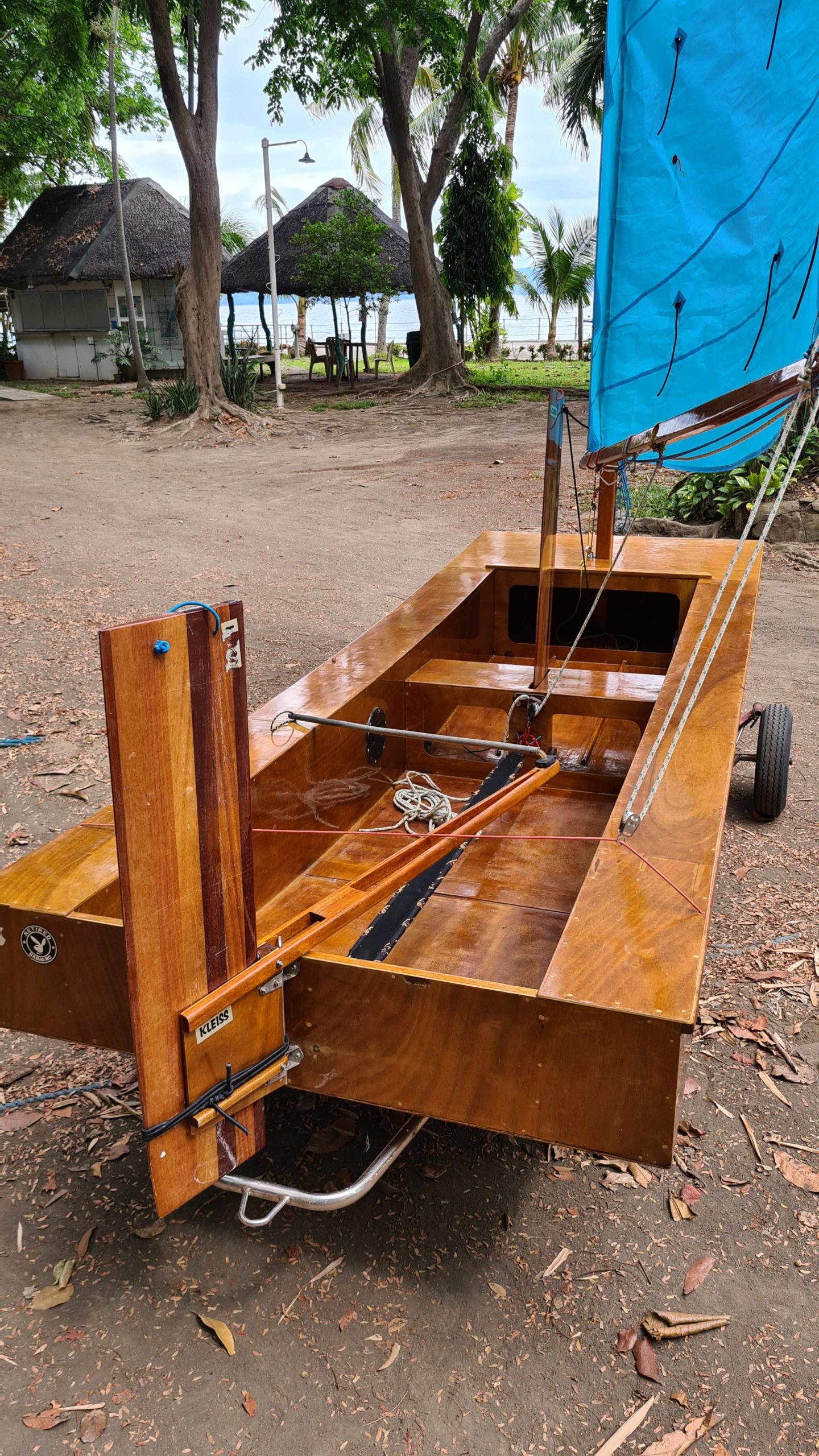
The Oz Goose layout is as simple as it gets. Both the rudder and daggerboard are retracted here, the daggerboard in its trunk and the rudder in its open-backed box with a bungee holding it in place.
T he rectangular shape of the boat makes it simple to mark out and cut its components. Only the 12′-long hull sides and the flotation tank sides have curves—sheer and chine—and they are all identical so only two curves have to be drawn and faired. The rest of the parts are straight-sided rectangles.
The Oz Goose is laid out around two full-length buoyancy tanks that form the cockpit sides and side decks. In the middle of the boat is the daggerboard trunk, instead of a centerboard trunk. It simplifies construction and maximizes cockpit legroom. The rudder blade is held by a ¼″ shock cord in an open-backed box. It can be set at any height and provides light and accurate steering in any depth of water. If the blade strikes an obstacle it swings back and, after passing over, snaps back down again.
The daggerboard and rudder are given foil cross-sections using the templates provided in the manual and scaled online by the designer. Especially for racing, it is most important to shape them accurately and keep them in good condition.
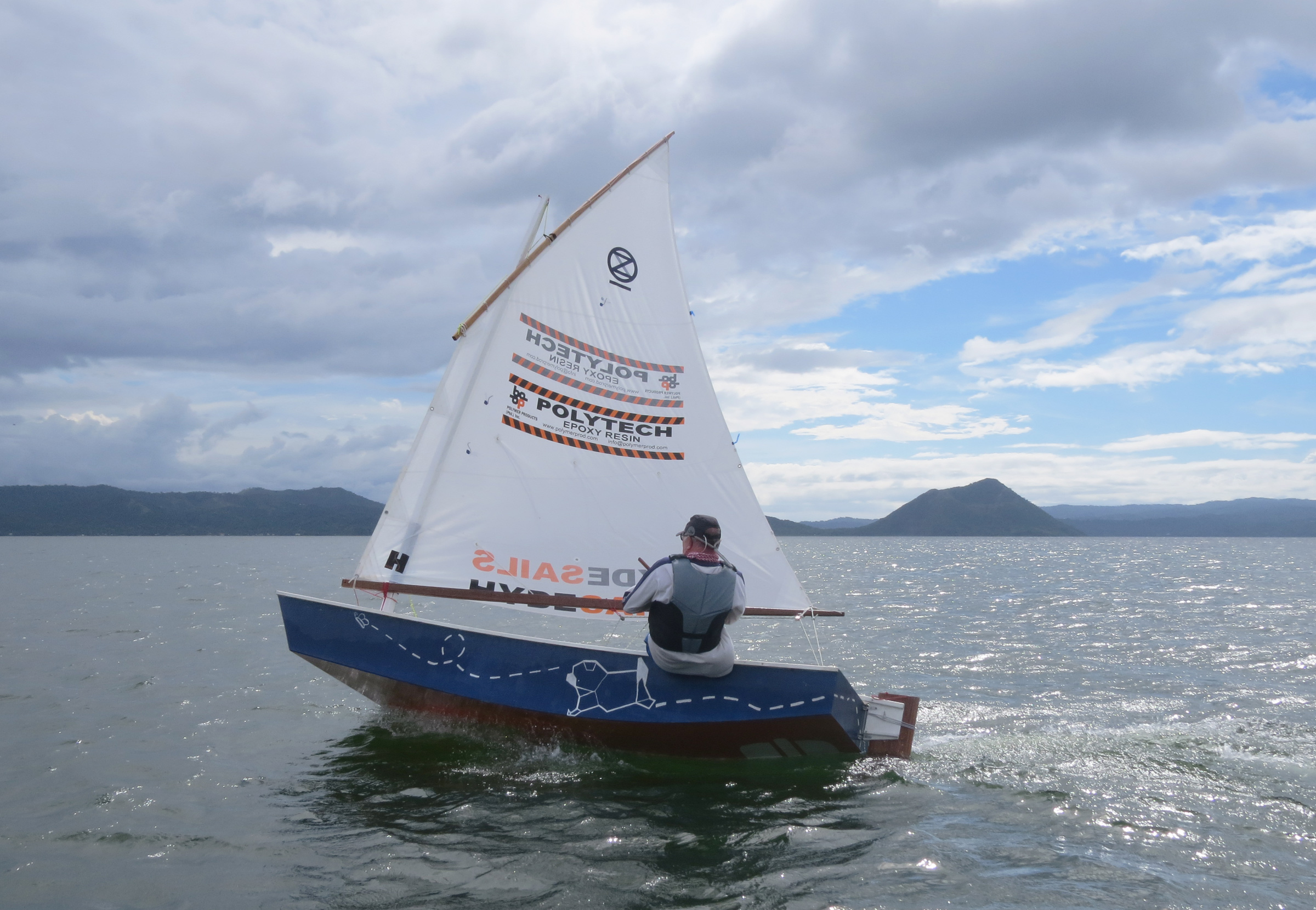
When an Oz Goose heels, much of the flat-bottomed hull rises above the water which significantly reduces the wetted surface area, adding to the potential for speed.
The 13 1/4′ tapered mast has a hollow box; the detailed instructions make it easy to build. The manual includes instructions for making the 11′ boom either hollow or solid. The 10 ½′ yard is solid. The Oz Goose flies an 89-sq-ft balance lugsail. Several measured drawings for making the sail are provided. For those who prefer a sail less expensive than custom-made or sewn at home, there are instructions for making the sail from a poly tarp and double-sided tape. Commercial sails for the Goose typically have two reefs.
Fittings for the rigging are simple and straightforward. For such a high-performance boat, the hardware list is tiny: three simple blocks, one horn cleat, and some rudder hardware. You can opt to have an adjustable downhaul and outhaul by purchasing and installing additional hardware, but rules for the Oz Goose class don’t allow racers to make adjustments with such devices during a race, so rich and poor are on an equal playing field.
Working evenings, odd days and weekends, it took me around two months to build the boat. A group on Facebook indicated building times from around one to perhaps six months. With the cost of materials relatively low here in the Philippines, our self-built boat cost under US$1,000. In North America, the cost of the boat, sails, and fittings, may come to about $2,000.
At 110 to 130 lbs, the Goose is light enough for two adults to carry to the beach or place on a roof rack. The boat can be sailed solo or with a crew member, for casual sailing or racing. The Goose even has space in its cockpit to fit three people and in light wind it still sails fine, even with those three aboard.
Senior sailors find it less taxing to move about in the ample, uncluttered cockpit and will enjoy the Goose more than other small dinghies. There are several disabled people who have also taken to sailing the Goose, reassured by its high stability. If you do manage to capsize a Goose, the buoyancy provided by the side tanks will let you bring the boat upright by using the daggerboard as a lever, and the cockpit won’t take on any water.
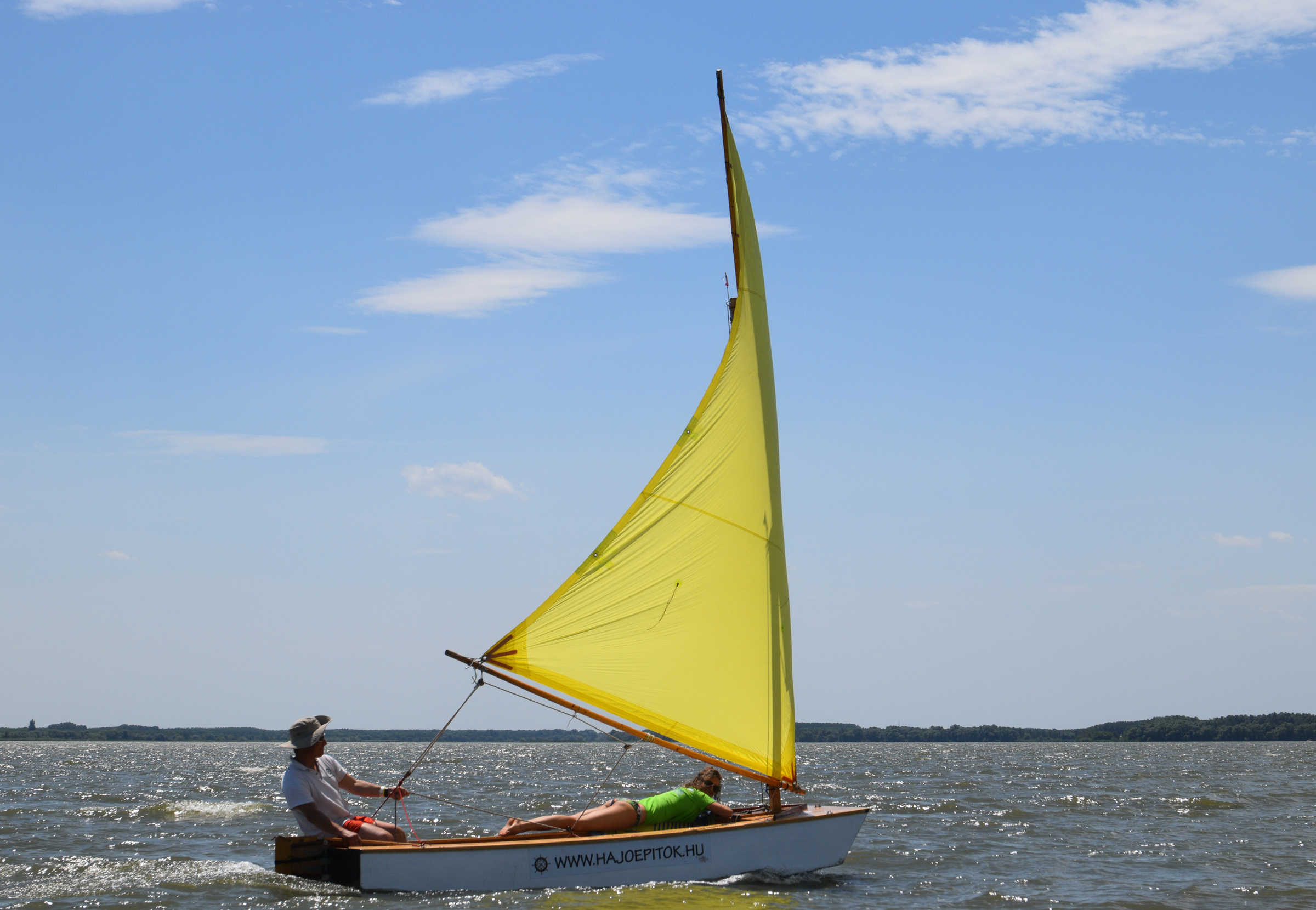
The popularity of the Oz Goose got a significant boost from videos of it sailing at high speed, but it was initially developed for sail training and family outings.
In light winds, you might normally sit well forward while going upwind, but with the Goose, the square bow needs to be out of the water or you will be plowing the waves like a bulldozer. The boat comes alive once the right trim has been achieved, and very little water ends up on the foredeck. When the wind picks up, and especially when bigger waves are building, we sometimes sit really far back. Sailing on a reach is easier, and the helm and crew position are essential to keeping the boat level and getting it to plane, which is a rewarding experience in a Goose. It loves to plane and the transition from displacement mode to planing is hardly noticeable. When sailing with two, it is important that they sit right beside each other in that correct location to squeeze out the best performance from the boat. And with two, the Oz Goose sails at the same speed as singlehanded boats, allowing for fleet races with mixed crews, including adult/child, adult/teen, two teens, two adults, and solo sailors.
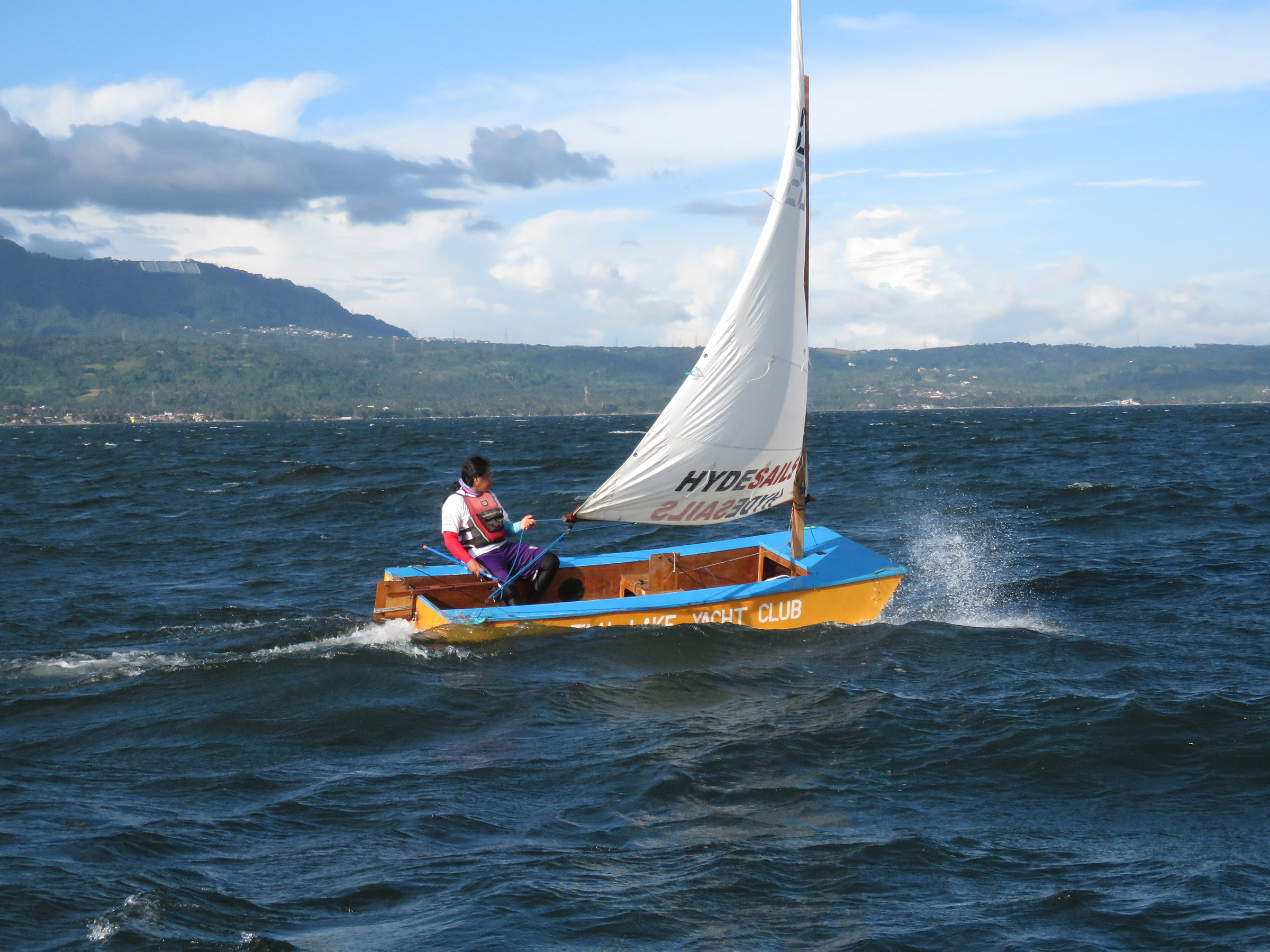
When the wind and waves are up, shifting the crew weight aft keeps the bow high and the ride dry.
Even with a double reef in heavy wind, the boat sails remarkably well and is controllable on all points of sail. One needs to be proactive with the sheet—keep it in hand. In gusts, a common reflex would be to steer the boat higher while relaxing the main just a bit but, in my experience, in a Goose it is better to bear down and release the main quite a bit to keep the boat flat and maintain speed. As soon as the wind allows it, I will pull the sheet in, then steer back on course.
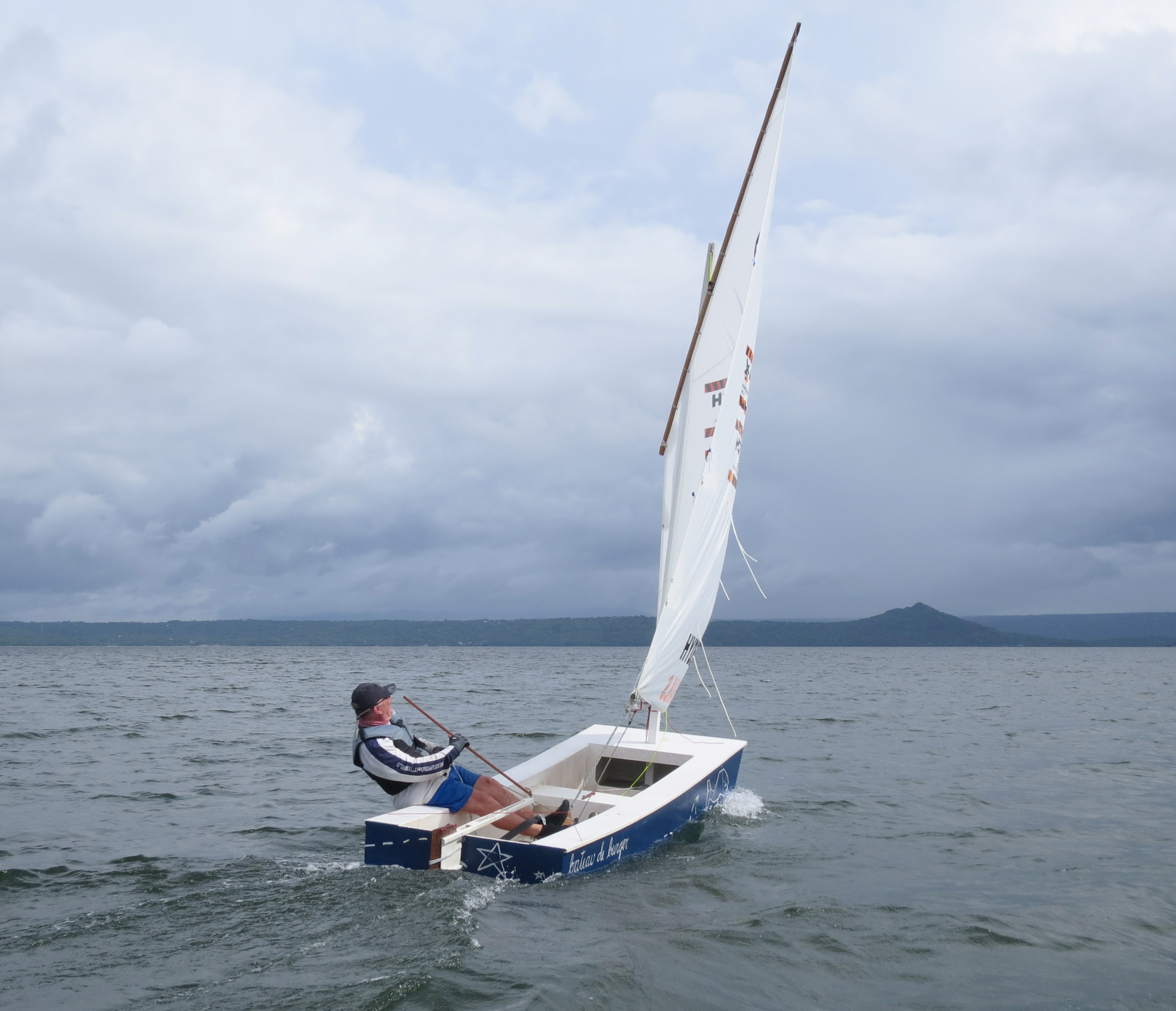
Contrary to expectations, the lugsail performs better when the sail is to windward of the mast and creased by it.
With the sail either on the downwind or upwind side of the mast, there is sometimes a very different feel on opposite tacks, especially right after coming about. We have found that neither port-rigged nor starboard-rigged boats will lose out when sailing side by side. Interestingly, our “Geesers” have found that the supposed “bad tack” of the lug has been wrongly attributed to having the sail on the windward side of the mast; it is actually the opposite. When the sail presses against the mast, acceleration is instantaneous after tacking. On the opposite tack, when the mast does not contact the sail, it is harder to find the speed and angle combination. The trick is to find the same speed as on the other tack before trying to point high. Being too greedy by pointing high before finding speed will fly back in your face.
Thom Kleiss was born on the water, on a houseboat in The Netherlands, and has been sailing since the age of four. Now living in Ireland and the Philippines, water is never far away. He is passionate about dinghy sailing development, is the Commodore of the Bere Island Watersports Club in Ireland, and is active in senior Laser racing in Singapore and Oz Goose sailing development in Taal Lake Yacht Club in the Philippines.

Oz Goose Particulars
Length/ 12′
Beam/ 4′ 2″
Weight/ 125 lbs
Sail area/ 89 sq ft
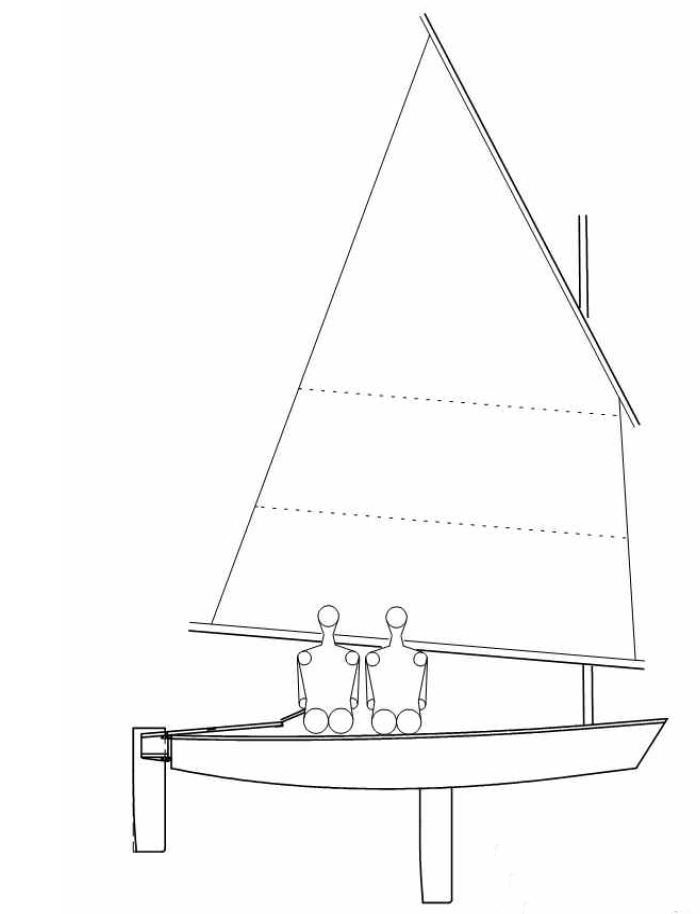
For more information about the Oz Goose, see Michael Storer’s website . To purchase plans, see his list of agents . In the U.S., plans are available from Duckworks : $40 for PDF format , $75 for print . Duckworks offers several Oz Goose kits , prices vary. Precut plywood kits are available in the Americas, Australasia, Philippines, Africa, and Europe.
Is there a boat you’d like to know more about? Have you built one that you think other Small Boats Magazine readers would enjoy? Please email us!
Share this article
Join The Conversation
We welcome your comments about this article. If you’d like to include a photo or a video with your comment, please email the file or link.
Comments (7)
Thank you for putting this article together, Chris and team.
Also a big thanks to Thom Kleiss. I had the pleasure to sail in company with him several times—he even beat me in some of our regular races. He has just departed the Philippines with his beautiful varnished Oz Goose (the one with blue sail in the article) in a huge plywood box being shipped to Ireland.
We were joking that the box would make an amazing MEGA Goose with a bit of added rocker!
Michael Storer
I love your article. I sail an East port Pram. It has a bit of a rocker. I would intersted in seeing the MEGA as I need room to add a cubby and sleep on board. Cheers
That version has been designed. See Duckworks for the Goose Explorer.
Very interesting observations about the supposed “bad tack” of the balanced lug rig. I noticed the same thing on my old Caledonia Yawl: the bad tack was better up wind than the good tack.
Following up on the “bad tack” surprising phenomenon, I wonder what would be the affect of putting the daggerboard slot to one side or the other. It would open up a lot of space.
See Michael Storer’s website.
Bolger insisted that boats don’t notice an off-center board, nor an off-center rig. Your idea should work fine.
Leave a Reply Cancel reply
Your email address will not be published. Required fields are marked *
Stay On Course
More From This Issue
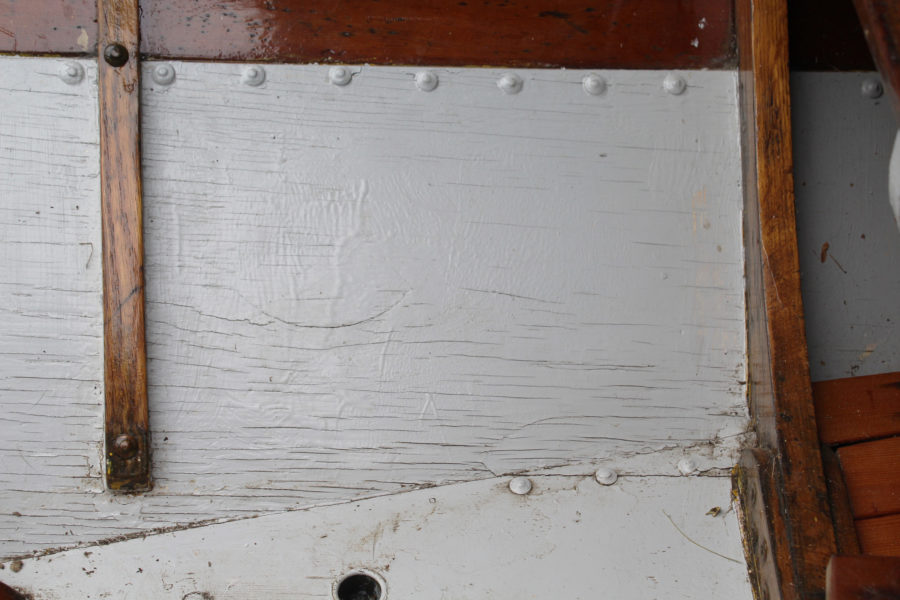
From The Editor
Checking my work
Several years ago—after the dory was kept at my dad’s rowing club, outside, under a tarp that I frequently found not fully covering the boat—the inside faces of the painted…
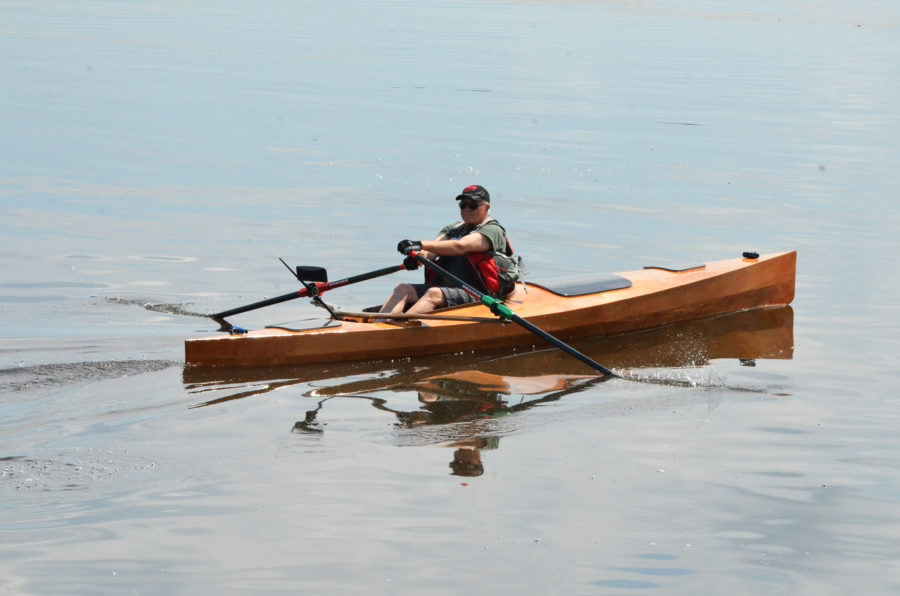
Expedition Rowboat from Angus
fter 20 years spent building, then sailing our beloved 38′ ketch, a Herreshoff Nereia, on the Great Lakes and St. Lawrence River, there came a point when Louise and I...
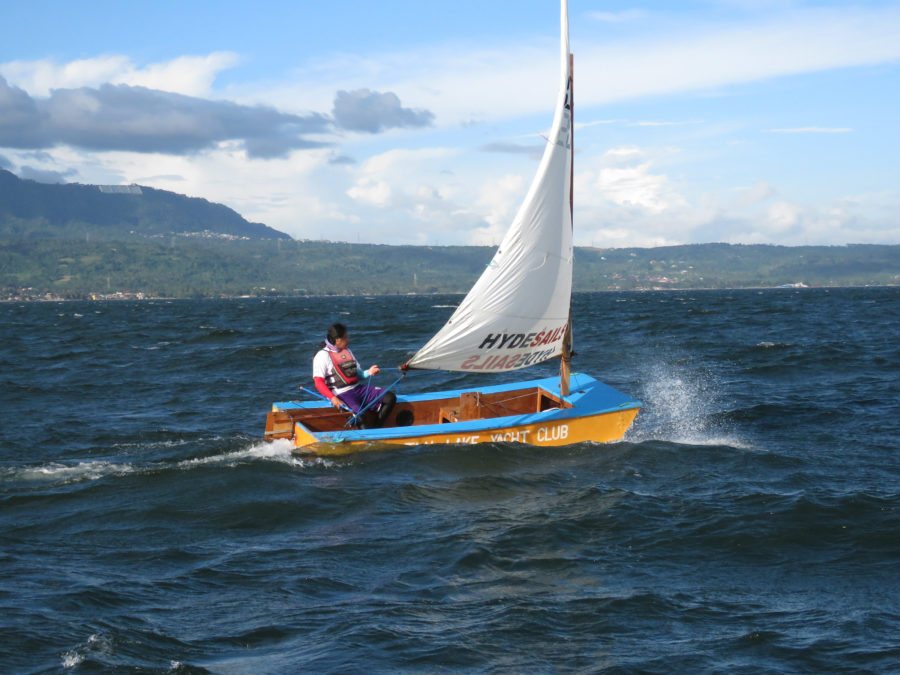
In light winds, you might normally sit well forward while going upwind, but with the Goose, the square bow needs to be out of the water or you will be…
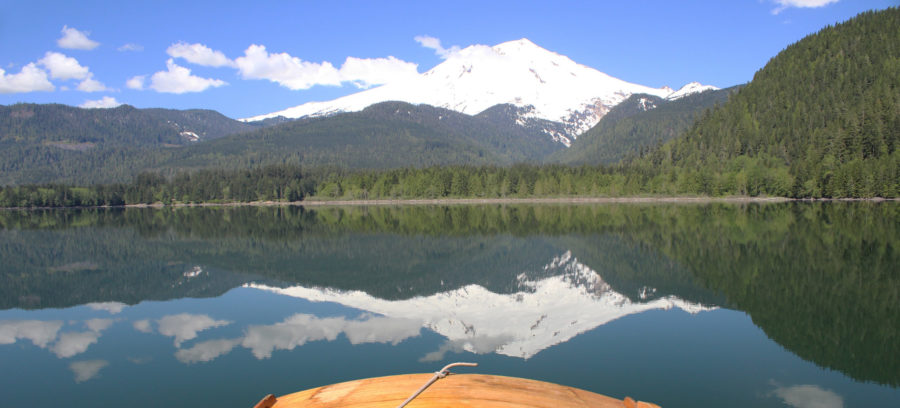
To the west, Mount Baker loomed over the valley that cradles Boulder Creek, a stream that is fen by the water dripping from the ice and snow that cover the…
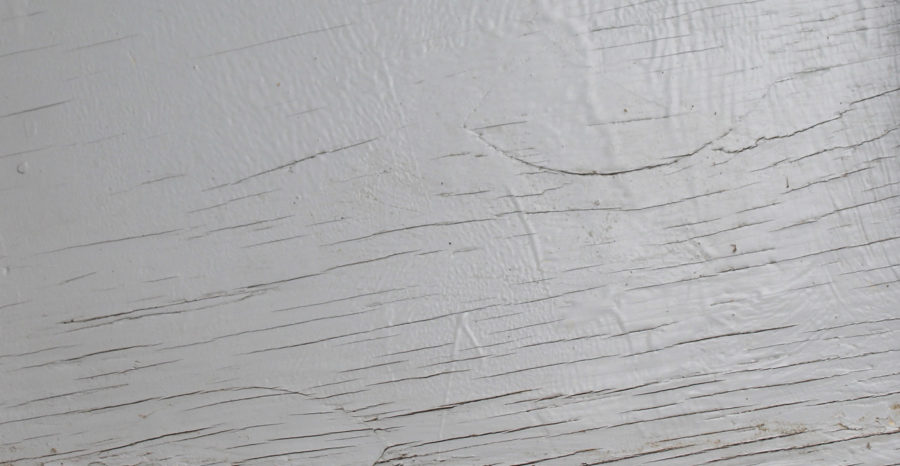
Fixing Checked Plywood
e have spent some time with plywood boats over the last several years, both vintage and new, and a common problem that we have had to address is cracks that...
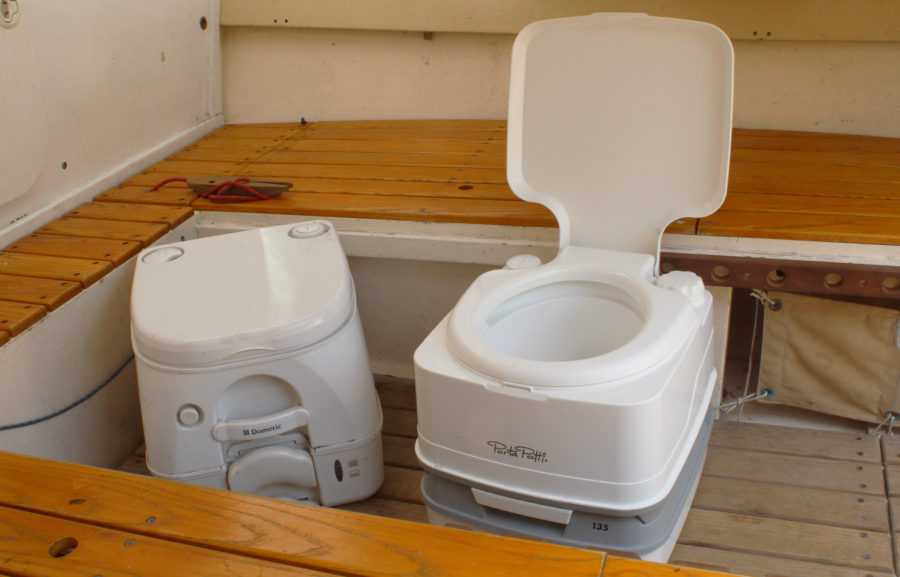
Product Reviews
Porta Potties
Because I bought the smallest available porta-potties, compact enough to carry aboard my cruising boats, it was to be expected that they wouldn’t be as easy and comfortable to use…
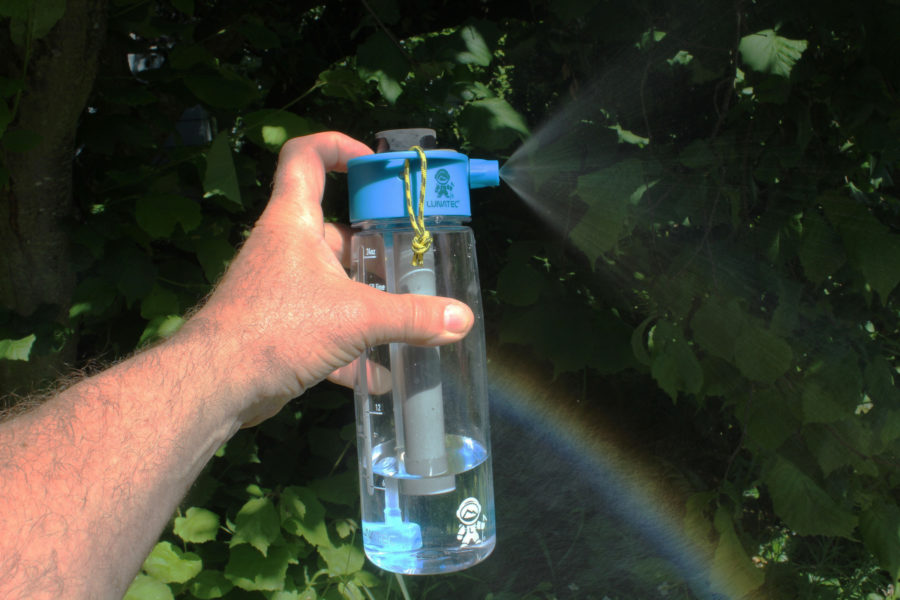
Lunatec Spray Bottle
The lid is what makes the Spray Bottle interesting. At its center is an air pump that provides pressure; its cylinder extends down into the bottle and the piston rod…
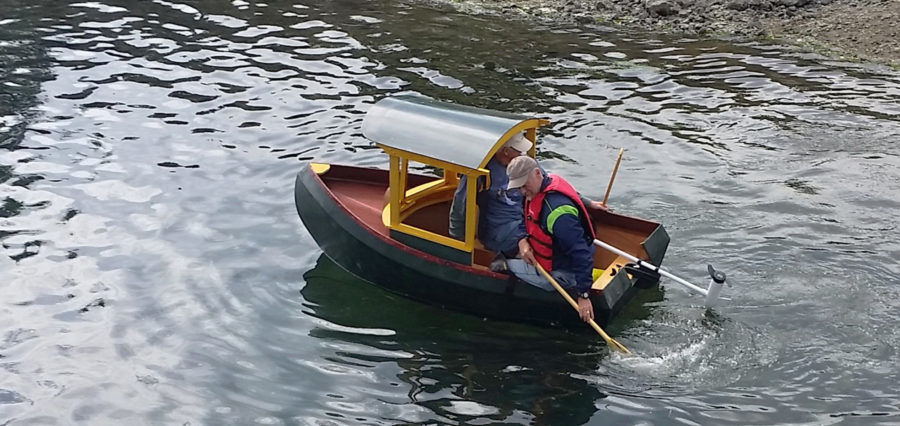
Reader Built Boats
A Tubby Tug
The team often had four saws going all at once—circular saws cutting out the plywood pieces with their long sweeping curves and jig saws working the tight radiuses. Jon soon…
More Boat Profile
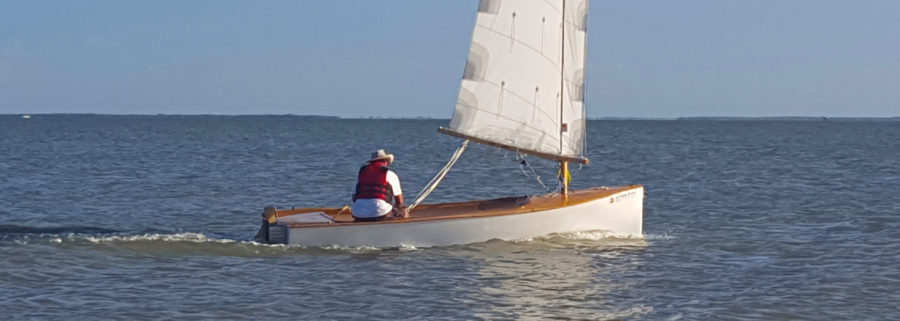
Saturday Night Special
I had been hearing about New Zealand boat designer John Welford’s idea for the Saturday Night Special for a few years: a fast beach cruiser so simple to build that…
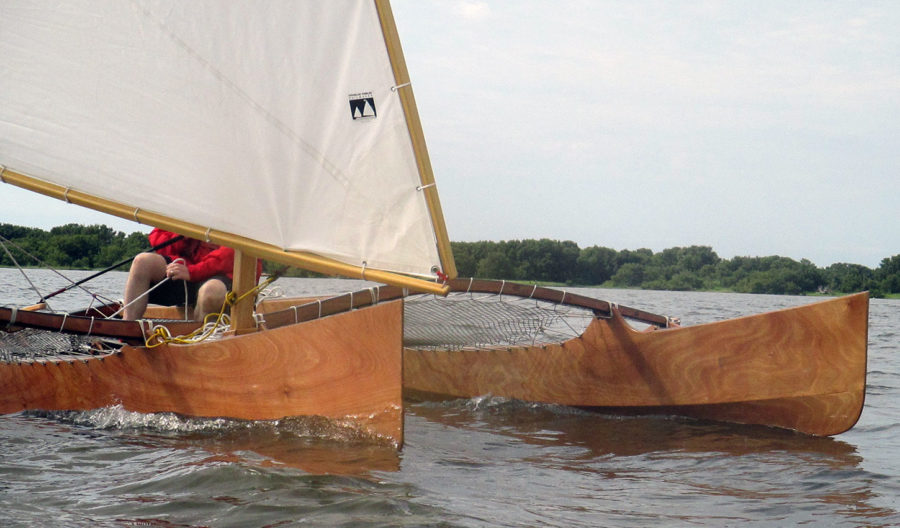
Outrigger Junior
Long before Europeans ventured to the new world, sailing dugout canoes fitted with outriggers sailed the waters in Southeast Asia and were used for migration throughout the Pacific region. The…
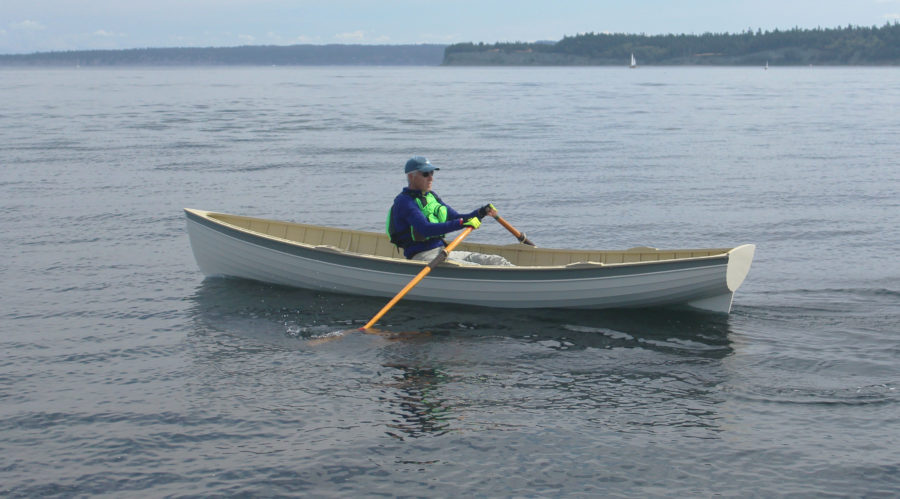
The Ebb is easily moved under oars, though its light weight made measuring its speed difficult. Weighing well under half my weight, the Ebb followed Newton's Third Law of Motion…
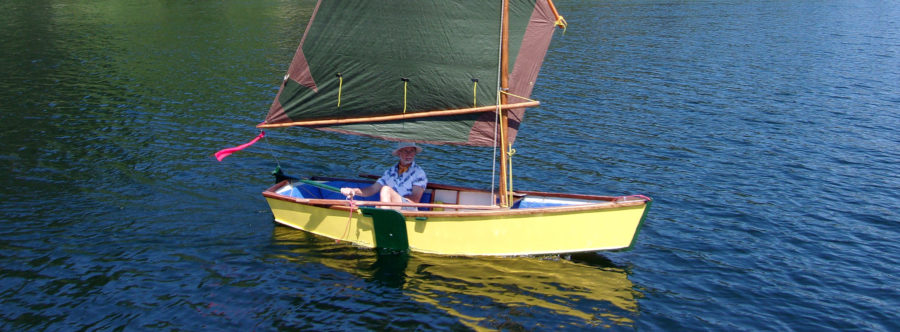
Summer Breeze
Designed to be the most boat from the least materials the Summer Breeze is a robust all-purpose skiff targeted primarily at pleasurable rowing and sailing in protected waters, but also…
Subscribe Today!
Become a subscriber today and you’ll recieve a new issue every month plus unlimited access to our full archive of backlogged issues.
Already a subscriber? Sign In
Subscribe For Full Access
Flipbooks are available to paid subscribers only. Subscribe now or log in for access.
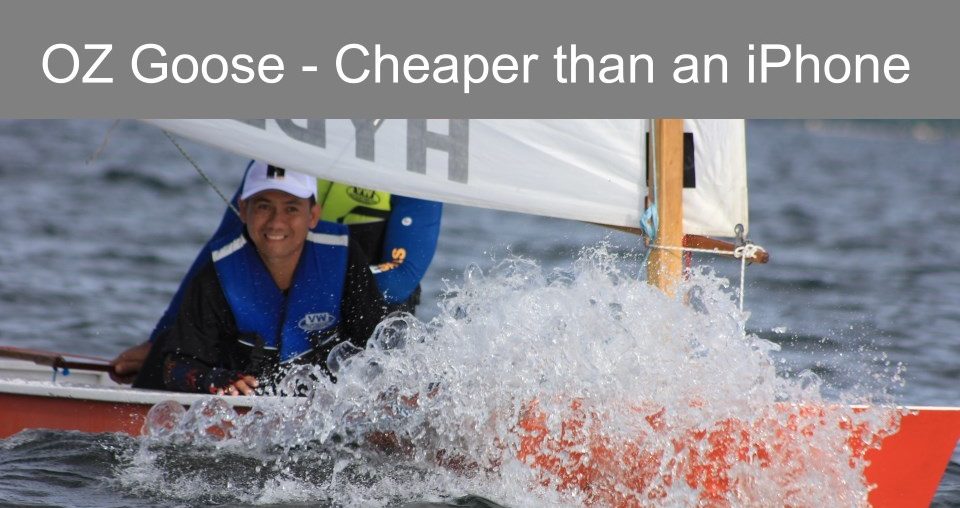
Kits and Videos to build your own Oz Goose are Available
It sails really well, but the Oz Goose is also easy to build. No experience? Group build at at one of our famous Family Boatbuilding Weekends or from the comprehensive plans or a precut kit using our video series.
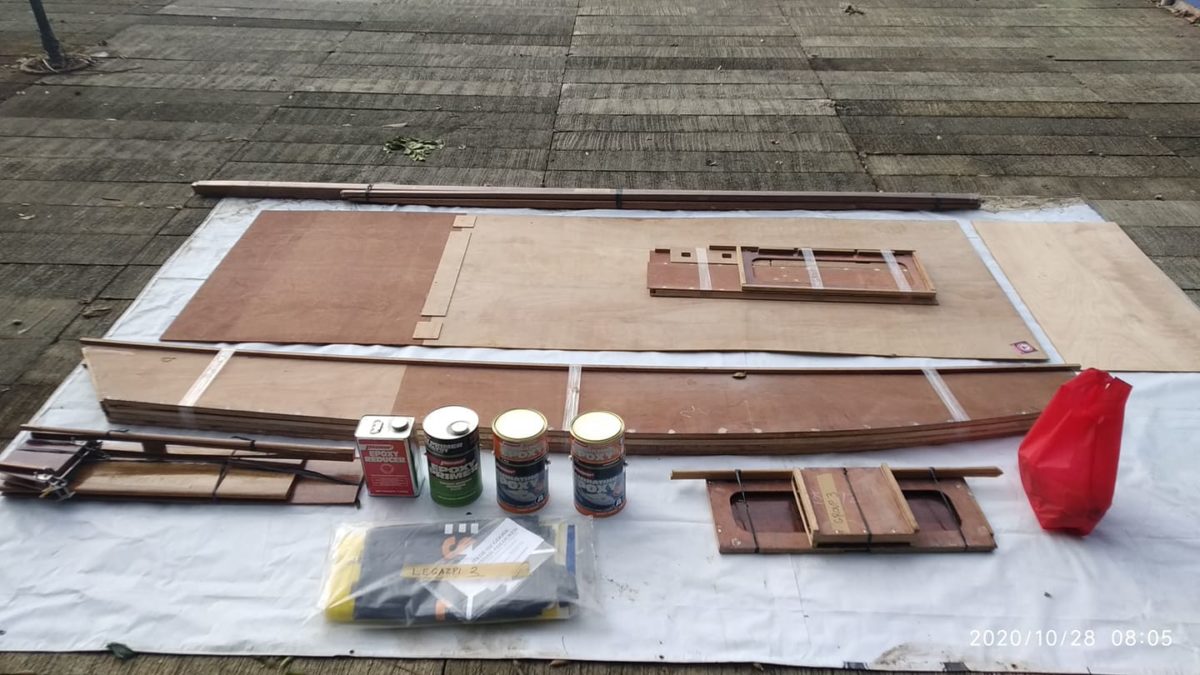
Assemble from the Oz Goose precut plywood kit
We are extending the areas where the kit is available. Please contact Roy at Monsoon Marine on Facebook.
A family project at home can use the plans and our excellent video series on building the Oz Goose to create a successful project. Many Geese are built this way. If there are problems or questions there is online help available from experienced builders and instructors.
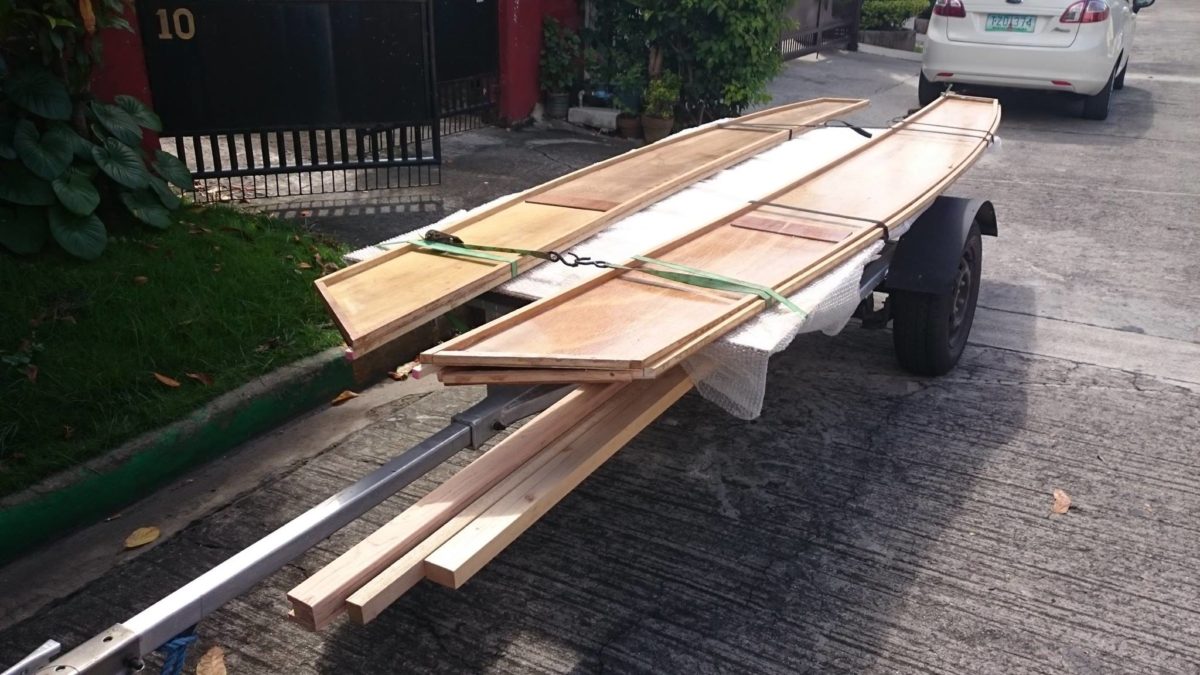
Join a Family Boatbuilding Weekend to Build an Oz Goose for your Family
Once or twice a year we run FBWs or Family Boatbuilding Weekends. Families, Corporate and Community groups can build their own Oz Goose in a group with other builders with instructors to guide you through the process.
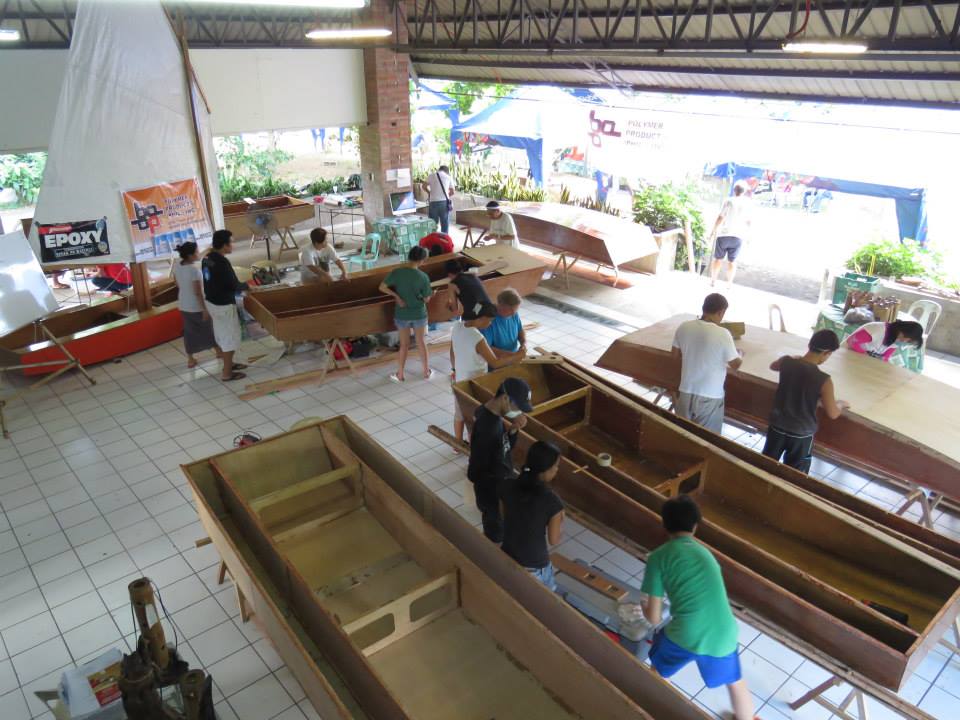
Biglang Sailing Club with the Oz Goose
So if you understand that 10 or more Oz Geese can be built at one time then it is possible to start a Biglang Sailing Club (Instant Sailing Club).
This is exactly what happened in Albay (12 boats) and Butuan (20 boats) with a community boatbuilding project. In fact, Albay finished the boats last year in 2021 during the height of COVID and get them sailing many days of the week. The Club also hosted the 2022 Oz Goose National titles opening tourism to this marine wonderland. A great celebration of a city coming back to life after the restrictions of the epidemic.
Watch in 4K if you can.
Last winter my father and I started building two Oz Goose sailboats. We got one of them finished up in the spring and have spent the summer and fall learning how to get the most out of the boat. Our initial requirements were pretty simple. The Goose had to sail well enough to be entertaining and also be a good platform to start teaching the kids in the family how to sail. We were initially talking about building Puddle Ducks, but I ran across Michael Storer’s versions of the box boats and discovered his design for the 12 footer. The larger boat seemed like a better choice for our intentions, so we bought the plans and got started.
When I was initially asked to put down a few words about our boat, I intended to write a piece about how we built the Goose. I would have covered the ins and outs of the construction process and the choices we made along the way. Tonight, I decided to go a different direction. Most folks here are already familiar with box boats and building boats with plywood. Michael Storer’s plans and instructions are so thorough, there isn’t much to add. The build was pretty simple. Instead, I’d like to tell the story of what happened after the build and how we discovered what a great little boat we had.
The Launch The Goose was launched on the first possible day it could happen. The previous weekend was spent finishing up the sail and rigging the boat for the first time. The balance lug rig was an unfamiliar animal. We knew a bit about Bermuda rigs, but this was new territory. We rigged it according to the plans and started watching the weather forecast. Weather can be a tricky thing during the spring in Texas. It is temperamental and can go from mild to severe in a hurry. We found a place to launch and headed there on Saturday. There was plenty of wind, which we found out later was pushing twenty knots. It was sunny, warm and the water not too chilly. We decided to launch off of a lee shore as a safety precaution (yes, you read that right). The plan was to launch into the wind, so that we could get back easily if something important broke.
We launched as planned, into fairly determined chop and managed to climb our way upwind while staying off the bars and out of the fishing lines. The Goose accelerated quickly and handled the rough water well, if not noisily. The bow was pounding across the chop, but we were moving well and everything was (mostly) under control. We had our hands full with an unfamiliar craft and the rough conditions, but it was obvious that we had a decent boat. We just had to learn how to sail it well.
We spent about 45 minutes of tacking back and forth. The Goose was cooking on a big gust when the throat grommet tore out of the sail. Bang! Our rig blew up. We quickly doused the sail and took a look around. We were sitting about a half mile off of our launch point, but happily, directly upwind. I pointed the Goose at the beach while my dad held up a couple square yards of sail. We arrived back at the beach in a few minutes and picked up speed during most of the run. We got the Goose on the beach, examined the damage and unanimously declared victory. The torn sail was but a speed bump. We now knew the Goose was a fun and capable little boat.
Early Lessons The sail was repaired easily and we managed to get the boat on the water nearly every weekend for the next couple months. After the first outing, I immediately cleaned up the lines and rigging and made everything a bit more tidy. We continued to launch from the same ramp. The water was usually rough, but the wind backed off to a more reasonable 10-15 knots on most days. We got better at tacking the boat without stalling and learned a little more about setting up the balance lug. The kids and wives got their first rides and everyone was having fun in the new Goose. Our confidence was building quickly.
The first pleasant surprise came when sailing singlehanded for the first time. The Goose has loads of stability with two or three people on board. The handling gets a little more lively with just one. It was still easy to sail, but quickly led to the addition of a hiking strap and a tiller extension. This is when I first noticed that the Goose could really get moving. Even in light air, the Goose responds to every little gust and just accelerates away. The sensation of speed was present in all types of conditions.
Performance I eventually found a better place to launch. It was on a sheltered cove with the prevailing south wind blowing off the beach. I took the Goose out to the new spot by myself and was happy to find flat water and a strong breeze. The next couple hours of sailing changed my entire outlook about the Goose. It is no longer the stable little boat that sailed well and would happily do 5 or 6 knots in moderate wind. This is a rocket, with some real performance potential. I spent the day flying back and forth across that cove, hiking out hard with the Goose obviously planing. Loads of power, eye-watering acceleration and still easy to sail. At the end of the day, my hand-held GPS told me the Goose has topped out at 10.3 knots. This was fun!
By this time I had been pestering Michael Storer with questions about boat setup, sailing techniques and any other information I could get. He patiently answered all my amateur questions and was very generous helping me tune up the boat and my sailing. I have a background in flying and we went back and forth about the aerodynamics of sailing until I started to correlate my experience to the new regime. This was invaluable feedback over the summer as I tried to get more out of myself and the Goose. As an Australian Dinghy Racer (I think that’s a formal title), he steered me towards the performance end of sailing. It has taken some time for the lessons to sink in (still working on it), but gradually, I have been able to apply some of it to sailing the Goose. In return, the Goose responded by performing better and going fast more consistently. The learning process has been extremely engaging and more fun than I ever expected.
Teaching the kids A big part of our original mission for the Goose was to get the kids on the water and learning to sail. My youngest is six and she has two cousins that are just a little older. Dad and I finally got them all out to the lake at the same time and we got them started. They had all had a couple rides, but this was our first try at purposefully teaching them a few things. We started with capsize practice. Before rigging the boat, we pulled it out into waist deep water with just the mast stepped. We started with the boat floating on its side with one of us holding the mast on our shoulder. The Goose floats high on the side air boxes. Tipping it over is one of the fastest ways to empty out any water in the cockpit. We set the kids in the boat, sitting on the airbox panel. Then we could right the boat and end up with all the kids in the boat. They aren’t big enough to climb in by themselves yet. This saved boosting them in after righting the boat. We practiced this a few times and rigged the boat to go sailing. After some quick review, I took each of them out into deeper water and we did a real (planned) capsize and recovery, just like we practiced. This accomplished two things. First, we now had an easy way to get the small kids back into the boat and they knew the drill. Second, it removed all fear of capsizing for the kids. Kids having fun equals kids learning.
After the capsize drills were over, we set out in the Goose with all five of us on board. Each of them got a few turns at the helm and trimming the sail. We even tacked a couple times with the kids running things. The plan was coming together! The Goose sailed just fine with the large crew and behaved the same as always. It was still stable, easy to steer and trim and even continued to accelerate nicely in the puffs.
Goose Improvements Learning more about performance sailing helped me learn more about our Goose. I began to realize there were a couple things that needed to be better if I wanted to see the Goose improve. The foils are everything on a sailboat. Both the foils in the air and the foils in the water. We stuck to the plans on both, but our execution on the wet foils was much better than the execution on the sail. Leech control was a problem on our sail. No amount of tension between the boom and yard would tighten the leech. As a result, it fluttered constantly. The time came to build a new sail. I was more careful and accurate making the second sail and it was worth the effort.
In a departure from the plans, I adopted a common setup from Michael Storer’s Goat Island Skiff. First was changing from a laced foot on the sail to a loose foot. This required making a new boom that could handle the loads. In addition to changing the footing, I followed the lead of developments worked out on the GIS setups. The downhaul was moved back on the boom to work more as a vang (sometimes called a ‘vanghaul’ by Goat drivers). I upped the purchase to 6:1. Still pretty light compared to modern rigs. The boom parrel was converted to a limiting line to keep the boom from sliding forward on the mast. This has come to be known as a ‘bleeter’ by the GIS folks. The outhaul was changed from a static setup (tied with a line) to an adjustable rig with 2:1 purchase. This allowed easy depth control on the lower sail while on the water. Combined with the loose foot, the new controls allowed more and finer adjustment while sailing. It also allowed us put some of those high performance techniques into practice. Lots of practice.
This combination of improvements changed the character of the boat under sail. The leech was now quiet. The rig could be adjusted for conditions from almost no wind up to a stiff breeze. The boat could be configured quickly for beating, reaching and running with fewer compromises. This revealed more performance under a range of conditions and speeds. With the leech under control, the lift to drag ratio went up. Less heeling for similar power and speed. The cost of these improvements was minimal and it only took a few days work to make the new sail and boom.
Performance Revisited The next few outings after the rework proved to be interesting. It was now early fall and available wind starts dropping off in this part of Texas. We got out on a couple 3-5 knot days. Speed was clearly better than before with similar air. Trials were run of various settings until we had the right range roughed out for different points of sail. Interesting and useful endeavors, but we were waiting for a day with a breeze to see what the Goose could do with the new rig. I did manage 10 knots in a decent gust one afternoon, but that was short lived. The opportunity to fully test the boat came while attending Sail Oklahoma 2014.
Sail Oklahoma is an amazing gathering of water folk. Most boats are built by their owners and most are sailboats. I don’t have the space here to tell all the details of that week, but if you have the chance to attend, you should. It was a great time and there was lots of sailing.
Conditions on Lake Eufaula were moderate most of the week (except when the cold front came through). Thursday morning was the strongest wind of the week for me. It was blowing just north of 10 knots, but the gusts were close and strong. A few may have been pushing 17-18 knots. On a two hour sail, I spent a fair amount of time above 8 knots and several excursions over 10 knots. The boat was behaving beautifully. Finally, on a reach in the middle of the lake, I got a couple gusts that really let the Goose wind up. By bearing off in the gusts and hiking moderately hard, the Goose registered 12 knots on the GPS. The box boat made from Home Depot plywood and lumber was solidly in the double digits. Last Sunday, in a nice stiff breeze on the home lake, the Goose hit 12.9 knots and was in double digits almost half the day. Think about that for a minute.
Final Thoughts A yahoo from Texas with no real sailing experience, built a box boat for a few hundred dollars. The materials were all local and came from Home Depot. Pine plywood, pine and cedar lumber and as a bit of icing on the cake, using a sail made from Tyvek homewrap. The boat floats and sails. With the help of Michael Storer’s ‘Learn To Sail’ online correspondence course, it even sails well. Add the shallow pond of experience gained over a summer and some adjustments are made. The boat now sails extremely well.
It performs well in light wind and is stable and safe in strong winds. The Goose is a load of fun single-handed, but still fun with a pile of kids on board. Inadvertent capsizes are rare, but recovery is quick and easy. Plus, it comes up almost dry when righted. It has the controls needed to start learning some advanced sailing techniques, but can also be set and forgot for simple cruising. This is some serious bang for the buck. It requires approximately the same building skills as constructing a dog house that will keep your dog dry.
We could not have picked a better boat for our first build. It met and then exceeded everything we wanted to accomplish. It would have been difficult to pick a boat better suited for learning to sail. Certainly not for the time and money invested. Puddle Ducks are a great option. They can also sail very well and have some of the same benefits as a Goose. If you want a little more room and a lot more speed, the Goose is worth a look.
When we started the build we had a pretty low bar for success. It just had to sail and maybe not be a barge. I can’t express how much fun we have had discovering what this humble boat has to offer. I can only encourage you to get in on the fun. It is an excellent choice for a first sailboat.
Michael Storer Boat Design - Oz PD Goose – plans available from:
www.duckworksbbs.com/plans/storer/pgr/index.htm
- Accessories
- Built Boats
- Information
- Rowing Boats
- Sailing Boats
- Motor Boats
- Surf and Paddle Boards
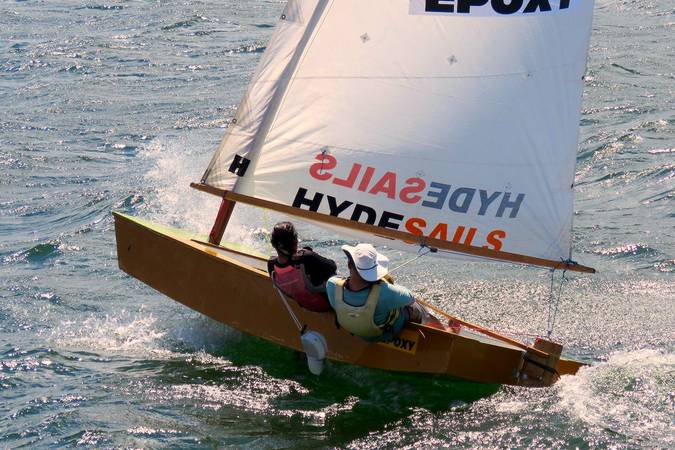
PDF plans £30
Eco epoxy upgrade +£20
Offer Details
The shopping basket requires JavaScript to be enabled in your browser.
Quantity : Add to Basket
Added to Basket
Prices include VAT
Product Description
The Oz Goose is a low-cost sailing dinghy that is easy to build and is perfect for clubs, regattas and learning to sail.
Australian boat designer Michael Storer created this fun sailing dinghy as a project that makes dinghy sailing accessible to everyone. Where he lives, in the Philippines, family and corporate groups are able to build ten Oz Racers for the same price as importing a single Laser dinghy.
The Oz Goose is light and simple to build, with no complicated woodwork. It also sails extremely well despite the low cost.
The Oz Goose will carry an instructor and two adults for sailing lessons, or one or two adults for club racing. It is equally at home with two adults and children aboard for family picnics.
The kit is for the epoxy filleted construction method. An alternative timber-framed method is also described in the plans, for builders in countries where timber is cheap.
The kit includes:
- Pre-cut wooden panels (6 mm plywood) with pre-cut joints
- Solid wood for gunwales, spacers and frames
- Epoxy resin and activator
- Epoxy fillers
- Woven glass fabric
- Woven glass tape
- Mast staves (for hollow wooden mast)
- Wooden blanks for boom and yard
- Daggerboard blank
- Daggerboard case
- Rudder blank
- Tiller blank
- Comprehensive building manual
- Free technical support from a competent builder
The kit does not include the sail or warp although we can supply them.
What else do I need?
The 114-page A4 plans for the Oz Goose are more like a book or a boat building course. They contain detailed information on each building step, including how to join the plywood, mark the shapes of the panels and use the epoxy.
The plans are highly detailed and fully dimensioned. That means that there is no poring over them with your scale rule and getting scale conversions wrong: the measurements you need to know are written in clear type and in the area that you are looking at.
An electronic version of the plans in PDF format that can be viewed using Adobe Reader. After credit card authorisation the file will be sent to the email address put on the order form.

Recommended Products
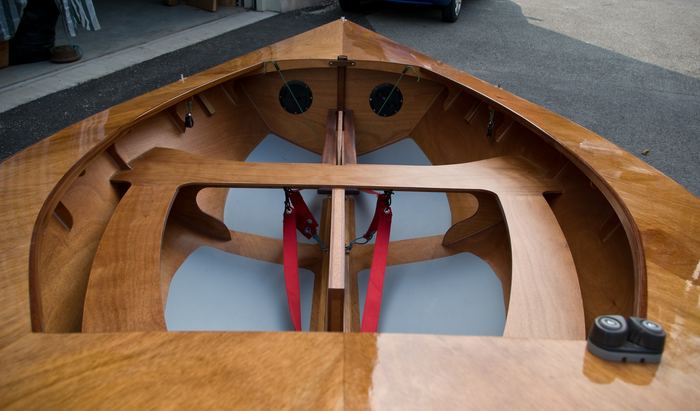
Okoume Plywood Sheets
High quality Okoume marine plywood in full or half sheets.
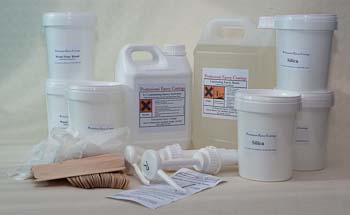
Epoxy Bundles
Bundles of epoxy and consumables for building or repairing canoes, kayaks and boats.
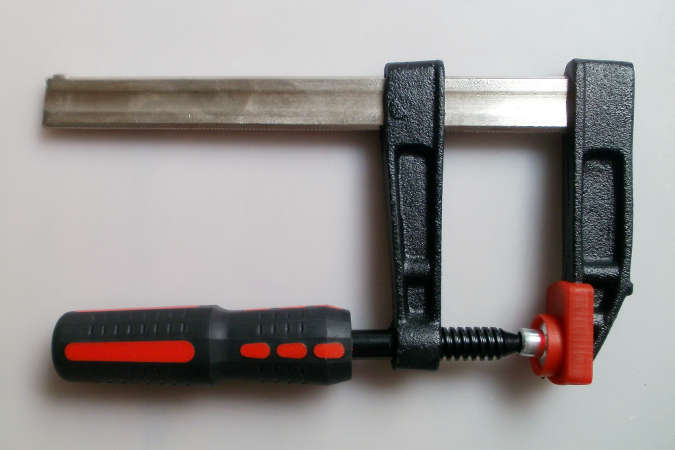
Cramps or clamps for holding wood in place while glue sets during the building of a boat.
- Fyne Boat Kits — Old Cooperage Yard, Gatebeck, Kendal, Cumbria LA8 0HW
- Telephone: +44 (0)1539 567 148
- Email: info [at] fyneboatkits.co.uk
Copyright © Fyne Boat Kits
Home » OzGoose – Inexpensive family sailboat or club training and racing boat
OzGoose – Inexpensive family sailboat or club training and racing boat
Sailboat with stability and good performance.
The Oz Goose is a 12ft sailboat with enormous stability from its box planform which also makes it very easy to build and a powerful sailer. It was formerly called the PD Goose.
The green boat is being steered by Cherrie Pinpin who just came third in the Paralympic worlds in Kiel. The white boat is Clytie Bernardi who came fourth in Kiel.
See Regional Agents for Australia, Hungary, Europe in menu.
This doesn’t at all sacrifice good sailing performance or rough water capability. It demonstrates normal upwind speeds for body hiked sailing dinghies and downwind speeds easily in the 10 to 13 knots range when one up.
Or to carry three adults with good performance and response even in light winds.
Handles well in strong winds and big waves and if capsized comes up with no water in the cockpit.
Oz Goose Specifications
Length – 12ft (3.66m) Beam – 4ft 1.5″ (1.258m) Hull Draft 5″ (0.125m) Centreboard Draft 40″ (1m) Hull weight – Gaboon plywood with Cedar or Paulownia timber ~115lbs (52kg) Luan plywood with Luan timber ~140lbs (63kg) Sail Area – 89sqft 98.27sqm)
Oz Goose Website for building, rigging and sailing information Buy plan USD38 Oz Goose Facebook Group
The stability allows it to carry a large 90sq ft mainsail. Hull weight is lighter than a Laser Dinghy. While derived from the shorter 8ft Oz Racer it has a quantum leap in both performance and capacity over the smaller boat.
Sails well with one to three adults
With the large sail and light hull (115 to 130lbs – 52 to 60kg built as specified) it has the right feel and excellent balance of well designed sailing dinghies.
We use the Oz Goose in five ways.
- Training boat with excellent response even with an adult instructor and two adult students.
- Family sailing boat for parents and up to three kids.
- Club racing boat where singlehanded and double handed boats can win races.
- Paralympic boat with members of the National team in pairs competing equally with able bodied sailors.
- Fleet build in developing nations. We teach locals to build using local materials in three weeks. With sponsorship help 10 Oz Goose sailboats are built for the price of importing one Laser Radial.
It has no vices and steers precisely in all conditions. Comes up easily after capsize with no water aboard. No need to climb up on the centreboard. The rig floats so you can just pull the end of the centreboard down to your stomach.
Low Cost Sailing for Family or Club.
Less than 10,000 USD for a racefleet of 10 boats for adults and teenagers. Half sponsorship, half paid by family and corporate teams.
Sailing too expensive in developing nations?
No. And you can see the closeness of the racing in these photos. In general about 1/3 to half the cost has been covered by sponsorship by local materials suppliers and sailmakers.
Ten Boats for the price of one Laser and stable enough for many types of disability to not be a handicap.
The rest is made up on a per team basis by the participants.
Most of the management of these projects is through Roy Espiritu of the boatbuidling advocacy group Pinoyboats.org (PHBYC on Facebook).
How does a square Oz Racer/PD Goose sail?
The Oz Goose looks odd – so how do they sail? Top recorded speed solo sailing has crept up in the last two years. Originally 12 knots it was raised to 12.9 (both on a tideless lake in Central Texas. And finally raised to 13.8 knots on a tideless lake in the Philippines. Here is the designer’s boat in upwind mode in about 15 knots of wind.
The Oz Goose class starts after the Hobie 16s at the TLYC. The Taal Lake Yacht Club is probably the Philippine’s most active sailing club and has traditionally focussed on the Hobies. However Hobie 16 is far too expensive for the average middle class family. So Commodore and Founder Peter Capotosto is looking at the Oz/ PD Goose to bring more people into the club, increase participation in sailing and to provide a pool of sailors, some of whom will move into more advanced sailboat types as their experience increases.

For fleet racing they are quite competitive sailed two up allowing learners or disabled sailors to take part in racing against the singlehanders.
But how does the Oz Goose flat bow and flat bottom deal with rough water? For six month of the year the wind blows down to our lee end of Taal Lake. We get SERIOUS waves and chop with lots of reflections off the rocky shore. The goose is very powerful because of its high stability and able to carry full sail happily in 20 knots even with 65kg sailors.
Two up (or three in pic below, the day was the fastest I’ve been with three of us aboard) it just smashes any taller wavetops out of the way, but a bit of heel gives a smooth ride. In light winds and leftover chop they can be quite noisy, but the 89 sq ft of sail gives good speed and action is smooth with a little heel.
Here’s a nosedive on a day when racing was cancelled. You can do massive nosedives with impunity. Peak speed for the day was 18 knots for a couple of seconds and a lot of time around 15 to 16. Try this in a Laser :). At all times the Goose’s steering is fingertip, no wild veers, just keep steering where you want to go.
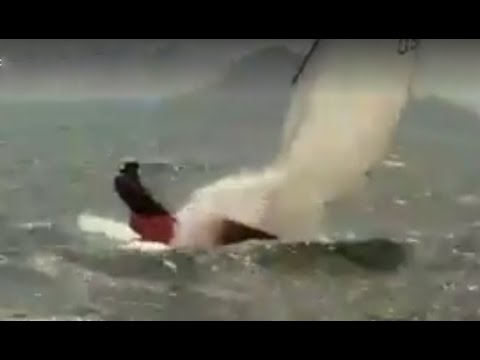
Instant Sailing Fleet – Prefab for Group build.
Even more interesting when the building of the boats takes about 10 days prep time from a volunteer team. Then the families and corporate groups arrive and in three days for them the flat packed kits turn into 10 boats ready to sail.
We did it 2015 on Taal Lake Luzon and repeated 2016 on another main Philippine Island of Cebu (photo above). This year in Davao, the main city to the South partnering with a school and a resort.
An Instant fleet of Oz Geese for racing, teaching sailing, trekking and fun sailing.
2017 we are looking at starting another fleet on one of the other islands – another instant teaching and racing fleet of around ten Goose sailboats. The third such project for the Philippine Home Boat Builder’s Yacht Club an internet group of enthusiasts
For Sailing Lessons
For sail training we find the boats sail very well with two adult learners and a trainer with good response even in very light wind – thanks to the 89 sq ft sail.A boat that responds instantly is the only way people will learn to sail well.
This prestart photo is Job Ferranco who is regularly coming in the top three of local racing after graduation from one of the sailing racing courses last year. The white boat is being steered by Clyte Bernado a member of the National Parlympic Sailing Team(Sailability) as is Cherrie PinPin in the green boat in photos above.Low Cost Sailing – Local Materials and few imported fittings
The Oz Goose is easy to build from available local materials. It is well developed with good foils and sail/spar matches. It is quick as a one person boat. It sails well to teach people to sail with two learners and one instructor right through the wind range.
Apart from Rudder fittings the boats use three blocks/pulleys, a plastic horn cleat and a stainless steel ring. Every other part of setup is in Spectra rope.
Local plywood, epoxy resin, basic fibreglass cloth and you can build 5 or 10 (with materials sponsorship) for the price of importing a Laser Radial into one of the Developing nations.
Without sponsorship individuals In the Philippines building an Oz Goose from scratch is around PHP35,000 (USD700 for everything including the sail. To have one professionally built is around PHP80,000 (USD1600).
Making your own sail from polytarp; direction included in plan; will reduce the cost by 8000 peso in the Philippines and about $400 in advanced economies.
In the Advanced economies we see builds going together for well under USD1000 (some have been half that) or around USD 2000 for a boat built of top quality materials.
Detailed Plans for the OzGoose/PDGoose.
Plans are highly detailed and you will be introduced to modern boat building methods step by step in the 100 page manual. Itself a course in modern boatbuilding. It even includes how to make a sail from local polytarp/tarpolene or Tyvek
- Find out about buying the Oz Goose plan for under $40 here and group discounts are available.
- Oz Goose (was PD Goose) Website for building, rigging and sailing information
- Buy plan USD36
- Oz Goose Facebook Group
So the boat that was called the PD Goose was renamed the Oz Goose because of the direct design relationship with the OzRacer series.
Oz Goose sailboat everything from a trainer to high wind solo thrills
The OzGoose was almost overlooked until Texan, Ian Henehan, started to put videos of what it could do on Youtube.
- Lots of speed – up to 12.9 knots on a tide free lake. 10 knots is very easy to achieve. Family sailing – with two adults and three kids aboard the boat will still move along very well and give a good feeling of sailing
- Training boat – underlying the plans is a very sophisticated boat, proper foils, correct spar bend, light weight. But you don’t have to worry about that, follow the plans and the boat will GO. This means that student sailors get instant feedback when they do things right.
- No handling vices – helm remains balanced at any heel angle at any windspeed. Boat has enormous stability making it forgiving of handling errors that would capsize other boats.
- Easy righting from capsize and no water aboard
- Light to handle on shore
- Quick rigging – less than 5 minutes, sail is reefable on the water for strong winds.
- Simple building – a good prospect for a group build project – we built 10 in the Philippines with a week of kit prep for a volunteer team then beginner sailors and boatbuilders assembled the boats in 3 days.
And the videos,
Note how neutral the helm is as the boat heels and the good speed despite the number of people aboard.
And the top speed videos. As the photos show the goose handles rough water happily as well.
Leave a Comment Cancel reply
You must be logged in to post a comment.
This site uses Akismet to reduce spam. Learn how your comment data is processed .

- Plans & Kits
- Kits and Packages
2X OZ Goose/OZ Racer Sail Insignia
Write a review.

- Create New Wish List
Description
Polyester adhesive Insignia Port and Startboard for Oz Goose and OzRacer.
The Oz Goose insignia has a horizontal bar beneath the superimposed OZ – the OzRacer insignia does not have the bar as per the illustration above.
It is typical to place insignia in the top ¼ of the sail. Starboard side are placed higher than the ones on the port side to make sure both are legible with light behind the sail.
There are downloadable instructions below for the neat trick involved for placing the insignia on the sail without creasing.
HERE are instructions for applying the insignia. These are the same instructions as used for our RSS Sail Numbers .
The circle part of the insignia is 10 inches (253 mm) in diameter. Sold as a pair - one for each side of the sail.
Notes on Fitting Sail Numbers and Insignia.
The Class Insignia goes in the top Third of the sail. The Insignia on the Starboard side is traditionally higher than that on port. Unless the insignia is exactly reversible. Sail numbers are below the insignia in contrasting colour to the sail (we will be adding white for tanbark sails next shipment). The numbers on the Starboard side of the sail are higher than the ones on port with no overlap.
If using a single digit number it is typical to use a zero in front of it. 01, 02, 03 etc
Tips and Tricks for Attaching sail numbers
(It is not difficult and easier than you think)
Make sure sail is clean and dry. Lay the area you are working on as flat as possible and it is on a reasonably firm surface
Work out where you want the insignias and sail numbers. Avoid sail seams if possible. Draw a guide line in pencil on the sail or line up with a sail seam.
Now the cool tip … The numbers are already the right distance apart for legibility. So we want to transfer them as a block. So trick is to hold everything together by putting (clear is best) packaging tape directly over the numbers while they are still on the backing paper. Follow the number lines and do a couple of diagonals as well to hold the angles immobile.
Note that the digit 1 will take some extra consideration. To assist in lining it up draw a line on the packaging tape aligned with the bottom of all the digits. This is also a good method if needing three or four digit numbers.
Slowly peel back the packaging tape from one corner as one piece. Work slowly and peel in a diagonal direction. What will happen is that as the packaging tape lifts off .. the number segment you want to transfer may stay put on the backing paper. If this happens push the tape down and press down hard on the first part of the number segment that the tape is trying to lift. Segments you don’t want are often left behind by the packaging tape. But if segments you don’t want get lifted by the packaging tape they can be removed after they go on the sail.
Make sure the sail iis not wrinkled. In the working area. Once you have all the segments you want lifted by the packaging tape, line the edges of the numbers up with the pencil line you drew. And press that area down only. Then progressively work towards the other side of the numbers trying to get the tape and numbers down smoothly push it down with medium force. Small wrinkles are easy to fix in the next step.
Peel back the packaging tape from one corner. This time if a number segment you want on the sail lift … push down the packaging tape again and use more force to hold the segment corner down … before progressing across the numbers peeling back the packaging tape.
The numbers will probably have some small creases. Don’t be tempted just to flatten them, but lift up a corner of the segment and peel it back until the wrinkle is pulled out and then push the segment down smoothly.
JOB WELL DONE
Related Products
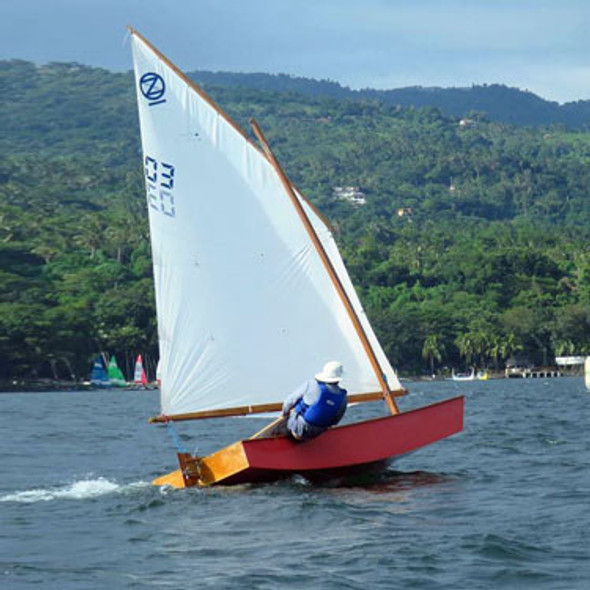
RSS OzGoose/OzRacer Sail

OZ Goose/OZ Racer Rudder & Tiller Hardware Kit

Goose Explorer Full Plans PDF

OZ Goose/OZ Racer Lines Kit

OZ Goose/OZ Racer Mainsheet Hardware Kit

OZ Goose/OZ Racer Downhaul&Outhaul Kits
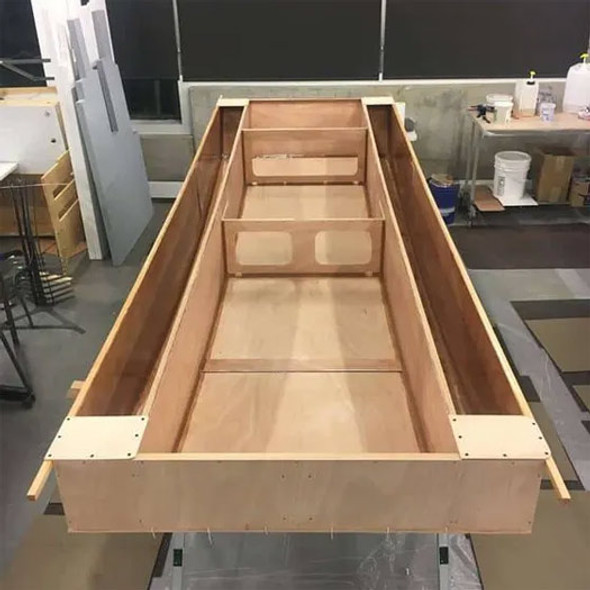
OzGoose Epoxy Kit

OZ Goose Plans PDF

IMAGES
VIDEO
COMMENTS
The Oz Goose Sailboat has a record of being the boat that goes out when the other boats are scared of the rough weather. It is very well behaved and always goes where you steer it. No matter if there a waves or the boat is well heeled. With one person aboard it pays to steer around the biggest wave peaks. But with two on the boat it just ...
construction photos of the Ooze Goose sail boat. from April to June of 2012
Goose Explorer Full Plans PDF. a Newer version of the discontinued Ooze Goose. The full plans contain both the OZ Goose plans and the Explorer Supplement - both are needed to build this boat. If you already have the plans for OZ Goose, you can build the Explorer by also purchasing the Explorer Supplement. Goose Explorer: Length 3666mm ( 12`3/8 ...
The Oz Goose is one of the many boats inspired by the Bolger Brick. The pilot version of the Goose was 8′ long and 4.2′ wide; later versions were the current size, 12′ by 4′ 2″. Only a handful of prototypes were built, but in 2014, when Texan sailor Ian Henehan started posting videos of an early Goose planing up to 12 knots in ...
Fibreglass the Bottom and Epoxy coat the outside of the Oz Goose Sailboat hull 08 Fibreglassing the Bottom. One-fourth plywood in the Philippines is thinner than the ply in the rest of the world. So we use 4oz fibreglass to cover the bottom and go 25mm/1″ around onto the sides of the hull.
Oz Goose Plans, Agents and Details. by Michael Storer. The Oz Goose is light and simple to build with no complicated woodwork. It also sails extremely well despite the low cost. To see the Oz Goose is an effective sailing boat look at our National Title Video! Top Right of every page. Buy Oz Goose simple sailboat plan - $40.
Full side view with full sails, sailing and having ful
Families, Corporate and Community groups can build their own Oz Goose in a group with other builders with instructors to guide you through the process. Biglang Sailing Club with the Oz Goose So if you understand that 10 or more Oz Geese can be built at one time then it is possible to start a Biglang Sailing Club (Instant Sailing Club).
By bearing off in the gusts and hiking moderately hard, the Goose registered 12 knots on the GPS. The box boat made from Home Depot plywood and lumber was solidly in the double digits. Last Sunday, in a nice stiff breeze on the home lake, the Goose hit 12.9 knots and was in double digits almost half the day.
PDGoose - now called the Oz Goose is a very simple sailboat. This was the first video we ever saw of Jim Post's first boat.Fleet sailing a few years later - ...
OzGoose, OzRacers RV and Mk2 , Ocean Explorer and other Squareboats. This is a playlist showing over 35 videos. They have been ranked for most informative ones first. Click on this icon at top right of video to choose what you want to see. The most informative videos are first. Oz PD Goose Sailboat - Speed. Video image can take a moment to load.
Product Description. The Oz Goose is a low-cost sailing dinghy that is easy to build and is perfect for clubs, regattas and learning to sail. Australian boat designer Michael Storer created this fun sailing dinghy as a project that makes dinghy sailing accessible to everyone. Where he lives, in the Philippines, family and corporate groups are ...
From Jim Post in the USA who built the first Mk1 Oz Goose family sailboat - photos of the Goose build and some on the water. More information on the Oz Goose with Videos here. Jim Post's Review of the Oz Goose. Here is the digital data for the Goose build. It has been a wonderful experiience following your design. The first tests will begin ...
The Oz Goose is a 12ft sailboat with enormous stability from its box planform which also makes it very easy to build and a powerful sailer. It was formerly called the PD Goose. The green boat is being steered by Cherrie Pinpin who just came third in the Paralympic worlds in Kiel. The white boat is Clytie Bernardi who came fourth in Kiel.
The Oz Goose is fast. Current record stands at 13.8 knots. It also sails very nicely with three adults aboard or two adults and a bunch of kids. Plans availa...
a Newer version of the discontinued Ooze Goose. The full plans contain both the OZ Goose plans and the Explorer Supplement - both are needed to build this boat. If you already have the plans for OZ Goose, you can build the Explorer by also purchasing the... $56.00. Add to Cart. Qty in Cart: 0. Quantity: ...
Why the Goose makes sense for beginning sailors through to intermediate. And how it is fun for experienced sailors too. 12.9 knots measured top speed and plenty of time above 10, yet a docile boat that moves well with a family or instructor plus two students aboard.
Goose Explorer is a cabin version of Michael storer´s Ozgoose sailboat with a bit more rocker. Small cabin gives cosy space for two or plenty of space for one sailor. Cockpit is really big so this boat is suprisigly spacy for it size. Compared to OozeGooze, Goose Explorer has less windage and more simple rig. OozeGoose has higher cabin ...
a Newer version of the discontinued Ooze Goose. The full plans contain both the OZ Goose plans and the Explorer Supplement - both are needed to build this boat. ... full length with panoramic windows and a center walkway slot in the roof. Everyone rides inside. This style of boat was invented by Phil Bolger in the early 1980's.These boats can ...
Pretty good for a sailboat that costs less than an iPhone. :) Video footage of Oz Goose Nationals 2017 held at Taal Lake Yacht Club. Find out how you can lea...
Jim Post is sailing his Goose in a light wind and flat water. This is one of the very first videos we saw of what would become the Oz Goose.See our first Nat...
a Newer version of the discontinued Ooze Goose. The full plans contain both the OZ Goose plans and the Explorer Supplement - both are needed to build this boat. If you already have the plans for OZ... Add to Cart. OZ Goose/OZ Racer Lines Kit. $66.00 Included: Main halyard - Marlow Racing Excel - 4mm x 30' (9m) Downhaul - Marlow Racing Excel ...